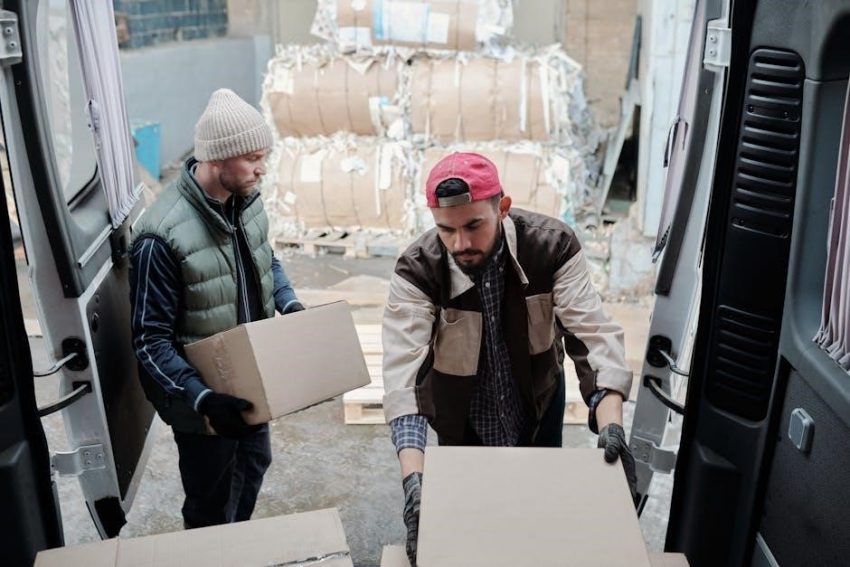TILE stands for Task‚ Individual‚ Load‚ and Environment‚ a systematic approach to assessing manual handling risks. It helps identify hazards and ensures safer workplace practices.
1.1 What is TILE?
TILE is an acronym representing Task‚ Individual‚ Load‚ and Environment. It is a systematic method to assess manual handling risks by evaluating the nature of the task‚ the capabilities of the individual‚ the characteristics of the load‚ and the surrounding environment to ensure safe practices.
1.2 Importance of TILE in Workplace Safety
TILE is essential for minimizing manual handling risks‚ ensuring tasks are performed safely. It helps identify hazards‚ reduces injuries‚ and improves workplace safety standards by systematically evaluating each component. This approach supports legal compliance and fosters a safer environment‚ making it a vital tool for proactive risk management and employee well-being.
Task in Manual Handling
The task involves understanding the nature of the work‚ including movements and postures‚ to assess risks and ensure safe manual handling practices are implemented effectively.
2.1 Understanding the Nature of the Task
Understanding the task involves analyzing its demands‚ such as repetitive movements‚ awkward postures‚ and distances. Assessing these factors helps identify potential hazards and determine safe practices‚ ensuring manual handling is planned and executed effectively to minimize risks.
2.2 Assessing Task-Specific Risks
Assessing task-specific risks involves evaluating factors like frequency‚ duration‚ and posture. Identify repetitive movements‚ awkward positions‚ and handling distances. This analysis helps pinpoint potential hazards‚ enabling adjustments to reduce strain and injury risks‚ ensuring safer manual handling practices tailored to the task’s unique demands.

Individual in Manual Handling
The Individual in TILE refers to the person performing the task‚ focusing on their physical capabilities‚ health‚ and training. Assessing their strengths and limitations ensures safe manual handling.
3.1 Factors to Consider About the Individual
When assessing the Individual in TILE‚ consider their physical capabilities‚ health‚ and training. Factors include strength‚ fitness‚ and any physical limitations. Understanding these helps match tasks to the person’s abilities‚ reducing injury risks and ensuring safe manual handling practices.
3.2 Assessing Individual Capabilities and Limitations
Evaluate the individual’s physical and mental abilities‚ including strength‚ fitness‚ and prior injuries. Consider ergonomic factors like posture and mobility. Match tasks to the person’s capabilities to prevent overexertion. Provide training to enhance skills and address limitations‚ ensuring safe manual handling practices.

Load in Manual Handling
Load refers to the object being moved‚ focusing on its weight‚ size‚ shape‚ and stability. Assessing load-related risks ensures safe handling and minimizes injury potential.
4.1 Characteristics of the Load
The load’s characteristics include weight‚ size‚ shape‚ and stability. These factors influence how it is handled and the potential risks involved. Understanding the load’s properties helps in determining the safest handling methods and equipment needed to minimize injury risks during manual handling tasks.
4.2 Assessing Load-Related Risks
Assessing load-related risks involves evaluating the weight‚ size‚ and stability of the object. Heavy or awkwardly shaped loads pose greater risks of injury. Unstable or uneven loads can shift during handling‚ increasing the likelihood of accidents. Proper assessment helps in identifying suitable handling techniques or equipment to mitigate these risks effectively.

Environment in Manual Handling
The environment factor in TILE considers the workspace‚ lighting‚ and obstacles. It assesses how workplace conditions impact manual handling safety and risk levels.
5.1 Workplace Environment Factors
Workplace environment factors in TILE include the physical layout‚ flooring‚ lighting‚ temperature‚ and obstacles. These elements can significantly impact manual handling safety and risk assessment. A cluttered or poorly lit workspace increases injury risks‚ while adequate space and proper flooring reduce hazards. Assessing these factors ensures a safer working environment and informs effective risk mitigation strategies.
5.2 Assessing Environmental Hazards
Assessing environmental hazards involves evaluating workplace conditions that could increase manual handling risks. Factors include uneven flooring‚ poor lighting‚ obstacles‚ and extreme temperatures; Identifying these hazards helps in implementing controls‚ such as clearing pathways or improving illumination‚ to reduce injury risks and create a safer working environment for manual handling tasks.

The Importance of TILE in Risk Assessment
TILE is crucial for identifying and mitigating risks in manual handling. It provides a structured approach to evaluating tasks‚ individuals‚ loads‚ and environments‚ ensuring safer workplace practices.
6.1 How TILE Helps Identify Risks
TILE helps identify risks by breaking down manual handling tasks into four key components: Task‚ Individual‚ Load‚ and Environment. Each element is analyzed to pinpoint potential hazards‚ ensuring a comprehensive evaluation. This systematic approach allows for targeted interventions‚ enhancing workplace safety and reducing injury risks effectively.
6.2 Reducing Injuries Through TILE Assessment
TILE assessment reduces injuries by evaluating each component of manual handling tasks. It identifies unsafe practices‚ highlights individual limitations‚ and addresses environmental hazards. By implementing adjustments based on TILE evaluations‚ workplaces can minimize risks‚ prevent musculoskeletal disorders‚ and create safer working conditions for employees.

Implementing TILE in the Workplace
Implementing TILE involves systematically evaluating tasks‚ individuals‚ loads‚ and environments to identify risks and improve safety. It ensures a proactive approach to reducing workplace injuries through tailored solutions.
7.1 Practical Steps for Applying TILE
To apply TILE effectively‚ start by analyzing the task’s requirements and the individual’s capabilities. Assess the load’s characteristics and the environmental factors. Identify potential hazards and implement control measures to minimize risks. Regular training and updates ensure sustained compliance with manual handling safety standards‚ fostering a safer workplace culture overall.
7.2 Tools and Resources for Effective Implementation
Common tools include risk assessment templates‚ load weight calculators‚ and ergonomic checklists. Training materials‚ such as manuals and videos‚ guide employees. Software solutions can simulate tasks and identify hazards. Regular updates to these resources ensure they remain relevant and effective in promoting workplace safety and compliance with manual handling regulations.

Case Studies and Real-World Applications
Case studies highlight TILE’s effectiveness in reducing workplace injuries through practical insights and improved safety protocols in manual handling scenarios‚ demonstrating its impact.
8.1 Examples of TILE in Action
TILE has been successfully applied in various workplaces to enhance manual handling safety. For instance‚ a manufacturing factory used TILE to assess tasks‚ reducing lifting injuries by 30%. Similarly‚ a healthcare facility applied TILE to evaluate patient handling‚ minimizing staff strains. These real-world examples demonstrate how TILE effectively identifies risks and improves workplace safety practices.
8.2 Lessons Learned from Successful Implementations
Successful TILE implementations highlight the importance of clear planning and employee engagement. Training programs that emphasize each TILE component have shown significant reductions in injuries. Additionally‚ workplaces that regularly review and adjust their manual handling practices based on TILE assessments report higher compliance and safer environments. Continuous feedback and adaptation are key to sustained success.

Training and Education on TILE
Training and education on TILE are essential for promoting a safety-first culture. Effective programs ensure employees understand and apply TILE principles‚ reducing workplace injuries and enhancing overall safety.
9.1 The Role of Training in Promoting TILE
Training plays a vital role in promoting TILE by equipping employees with the knowledge and skills to assess manual handling risks. It ensures they understand each component of TILE‚ enabling them to apply the principles effectively in their daily tasks and contribute to a safer work environment.
9.2 Best Practices for Educating Employees
Effective employee education on TILE involves interactive training sessions‚ real-life examples‚ and practical demonstrations. Employers should provide regular updates‚ encourage open discussions‚ and ensure understanding through assessments. This fosters a culture of safety‚ empowering employees to apply TILE principles confidently and consistently in their manual handling tasks.

Legal and Regulatory Framework
Compliance with manual handling regulations is crucial. Employers must assess risks and implement safety measures‚ with legal implications for neglecting TILE principles and endangering worker safety.
10.1 Compliance with Manual Handling Regulations
Compliance with manual handling laws is essential for workplace safety. Employers must conduct TILE assessments to identify risks and implement controls‚ ensuring adherence to legal standards. Failure to comply can result in legal penalties and increased liability for work-related injuries‚ emphasizing the importance of integrating TILE into regulatory frameworks to protect both employees and organizations.
10.2 Legal Implications of Ignoring TILE Principles
Neglecting TILE principles can lead to legal consequences‚ including fines and lawsuits. Employers may face penalties for non-compliance with manual handling regulations‚ while employees could suffer preventable injuries. Legal action often results from inadequate risk assessments‚ highlighting the necessity of adhering to TILE guidelines to avoid judicial repercussions and ensure workplace safety standards are maintained effectively.
TILE is a vital framework for manual handling safety‚ emphasizing Task‚ Individual‚ Load‚ and Environment. It reduces injuries and enhances workplace safety through systematic risk assessment and proactive planning.
11.1 Summary of Key Points
TILE (Task‚ Individual‚ Load‚ Environment) is a framework for assessing manual handling risks. It evaluates tasks‚ individual capabilities‚ load characteristics‚ and environmental factors to ensure safe practices‚ reducing workplace injuries and enhancing overall safety through structured analysis and proactive planning.
11.2 The Future of Manual Handling Safety
The future of manual handling safety lies in advancing TILE principles through technology and training. Automation‚ AI‚ and enhanced risk assessment tools will further reduce injuries. Emphasizing proactive approaches and continuous education will ensure workplaces adopt safer practices‚ fostering a culture of prevention and efficiency in handling tasks.
